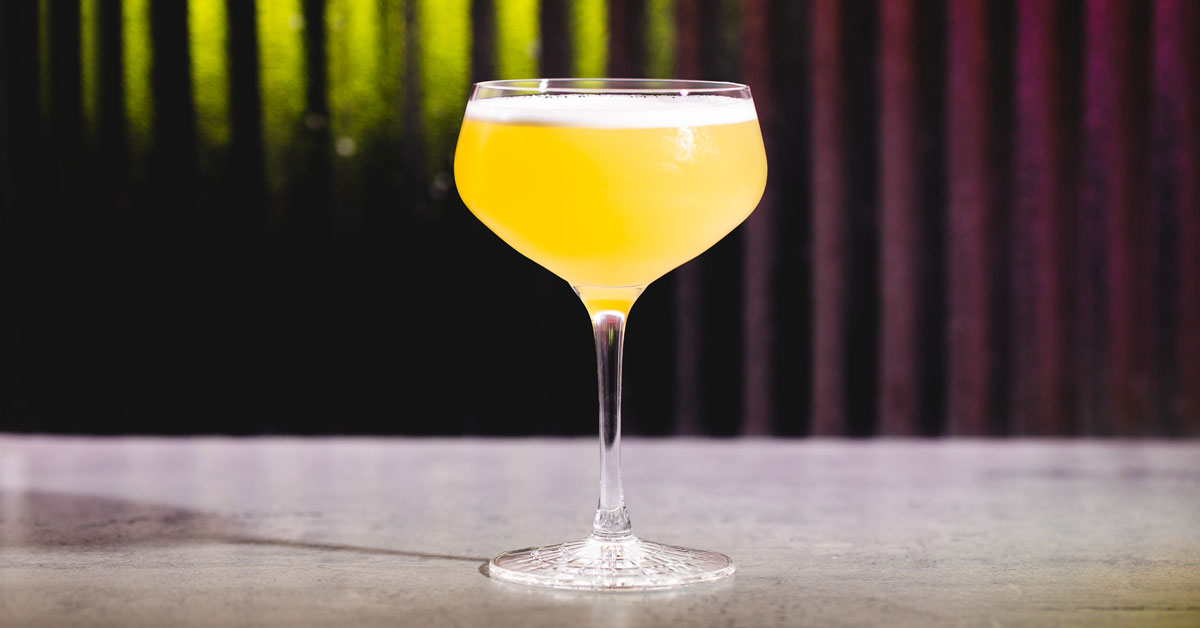Among the canon of classics and modern classics are a trove of lesser-known cocktails just waiting for their time to shine. But as our exploration of “D List” drinks has shown, the archives can be a fount of inspiration.
“It seems like everyone always goes to the same handful of classics for every dealer’s choice,” says New York bartender Joaquín Simó. “So it’s great to reveal some deeper cuts that can engage a guest with something they haven’t tried before that has still withstood the test of time.” To find these special, overlooked recipes, we asked a handful of veteran bartenders what they think is the most underrated classic. Here’s what they had to say.
“Sasha Petraske first introduced me to the Star Daisy at the OG Milk & Honey, and I’ve been captivated by it ever since,” says Simó. The lesser-known classic—made with gin, apple brandy, dry Curaçao, lemon juice and simple syrup—has a brightness that makes it suited to the warmer months, with an orchard profile that can also carry the drink into the fall and winter. “It’s like an autumnal Bee’s Knees on boozy ’roids,” he explains, adding that “the citrusy push-pull of orange and lemon is even brighter here than [in] a Sidecar.” Simó particularly appreciates the capacity for the cocktail to convert those who aren’t fans of brandy or gin.
Star Daisy
Bright citrus and autumnal apple brandy make this unsung cocktail applicable year-round.
First published in The Savoy Cocktail Book in 1930, the Palmetto reads like a rum Manhattan, according to rum expert Paul McGee, who makes the case for the forgotten classic. “What makes the Palmetto unique is that it calls for a specific style of rum, which is no longer made, known as Santa Cruz rum,” he says. Also known as St. Croix rum, the style was popular in the 19th century and had a distinctive flavor due to its unique distillation, which included the skimmings from the surface of boiling sugar cane juice. McGee’s take on the drink pulls from historian David Wondrich’s description of the spirit—light-bodied, like Cuban rum; grassy, like Martinique rum; and funky, like Jamaican rum—by relying on a split base of three rums. In lieu of a Cuban bottling, however, McGee uses an aged Barbados expression to make the drink “a bit rummier” and richer-bodied.
Palmetto
A forgotten classic that reads like a rum Manhattan.
For certain bartenders, “underrated” doesn’t necessarily mean lesser-known. Maison Premiere’s William Elliott argues that the Tom Collins, a ubiquitous classic, deserves to be “treated well.” Although the style of serve shows up on menus worldwide, “in its original gin—specifically Old Tom—capacity, it’s just transcendent,” he says. The key is finding a lightly barrel-aged Old Tom (Elliott uses Ransom Old Tom), and, while it’s common to build the drink in the glass, a proper Tom Collins should be shaken and fine-strained. At the Brooklyn bar, he takes a Gimlet-like approach to the base of the drink, calling for the bright combination of lemon juice and lemon cordial, plus dashes of orange bitters before topping with soda water. A dusting of confectioners’ sugar and a float of Angostura bitters add a final flourish.
The Godfather may have recently made its unlikely comeback, but according to Miami’s Christine Wiseman, it should be more widely recognized. When made with a tropical-leaning Scotch, like her preferred whisky for the drink, Dewar’s 12, the dive bar staple is “delightful” year-round, she says, whether it’s by the fireplace or the pool. Riffs on the drink abound, but Wiseman keeps her spec simple to let the Scotch shine. Seattle’s Anu Apte agrees: “It’s one of my favorite simple yet often-overlooked after-dinner drinks.” While amaretto can turn people away for fear of an overly sweet drink, using just a small amount of the Italian liqueur can make for a balanced serve, Apte says; her take calls for just a bar spoon. The recipe can be adjusted, too, with more or less peat depending “on my mood and/or what I had for dinner,” and with more or less amaretto, depending on the Scotch. Creating a “Godfather–Old-Fashioned mashup,” Apte also sometimes adds a couple dashes of Angostura bitters to the mix.
“In all honesty, I don’t drink cocktails often, am not a huge fan of egg whites in my drinks, and am not a lover of absinthe,” says New York bartender Natasha David. Yet, the frothy, absinthe-spiked Rattlesnake is her pick, because, despite the ingredients, it’s unexpectedly balanced. First appearing in The Savoy Cocktail Book, the hard-hitting drink—a mix of rye, egg whites, “sweetened lemon juice” and absinthe—earned the name “because it will either cure a rattlesnake bite, or kill rattlesnakes, or make you see them.” David’s version maintains a similar build to the 1930s spec, calling on lemon juice and simple syrup and finishing with an Angostura bitters swirl. As David puts it: “It just goes to show that ingredients in the right proportions create harmony, even if they aren’t always up your alley.”
Rattlesnake
A frothy, absinthe-spiked cocktail that’s surprisingly balanced.




